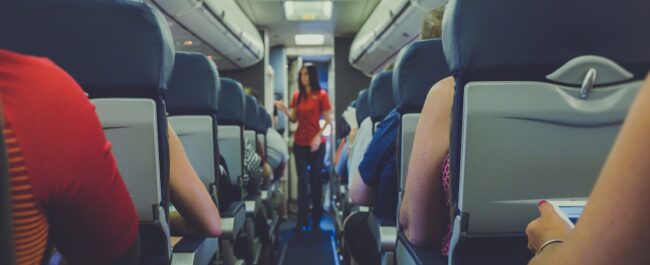The Comfort of Hospitality: Is Airline Beverage Service a Necessary Risk?
With airlines tightening their belts and reducing frills and conveniences in recent years, passengers are clinging to the small pleasures remaining. Sometimes a hot cup of coffee or tea mid flight is an important comfort that makes a long day of travel a little bit better. But a recent ruling by the European Court of Justice has caused some to speculate on whether airlines may soon reduce or halt beverage service on flights.
Following a lawsuit stemming from a 2015 accident in which a 6-year-old girl suffered severe burns on her chest when her father’s cup of coffee tipped over on the tray table in front of her, the highest court on matters of European Union law upheld a lower court ruling that found the airline is responsible for any accidents in which no passenger negligence was present. Thus, no “hazard” (such as severe turbulence or equipment malfunction) is required for an injured passenger to bring a valid suit against the airline following a hot beverage spill or burn.
Ultimately, it is important that airlines retain liability for passenger safety. Without it, the incentive of profits may rise above an incentive to protect consumers. But with a wide open path to litigation—that affects all airlines that fly to Europe as well—the ruling presents a level of liability that airlines may choose to skirt by dropping hot beverage service entirely.
The comfort of hospitality: A necessary risk?
The best practices for brewing and serving coffee and tea call for hot temperatures that present a risk of scalding should a spill happen. Similar to drive-thru and curbside service, airline travel inherently presents additional risks to the consumer (such as plane movement, sudden movement of reclining seats, and proximity to others) in regards to handling hot beverages. There’s no way around that fact.
But it’s also true that travel is disruptive. Preparing and packing, commuting, and then being shuttled in a large metal tube—perhaps between time zones and cultures—takes its toll. Passengers are limited to the hospitalities a carrier chooses to provide. With many comforts, meals, and conveniences already slashed to trim airline budgets, many hospitalities that eased the turmoil of travel are already gone.
Beverage service is a small remaining luxury for travelers, and we hope that providing hot coffee, tea, and other drinks to passengers doesn’t end up on the chopping block as well.
Hot beverage safety measures
Safety and operational training for flight staff, similar to the training foodservice employees on the ground receive, will mitigate liability issues. Hot coffee continues to be a strong preference for many passengers, but there are simple, practical steps airlines can take to serve hot beverages in a safe manner and increase passenger safety without cutting the service entirely.
The strongest safety measures include:
- Using a sturdy and stable cup that is not hot to the touch. This enables passengers to hold onto their drinks when they are hottest, avoiding spills that occur when drinks on tray tables are bumped or jostled.
- Leaving space at the top for condiments and “slosh.” An inch of space at the top not only leaves room for creamer, but also for the coffee cup to absorb the hot beverage’s inevitable slight movements while the drink is at its highest temperatures.
- Including all condiments prior to serving. Adding creamer, sugar, or other modifiers before passing the drink to a passenger avoids spills that come from removing the lid and tinkering with a hot drink in a small space.
- Securely lidding all beverages. Presenting the drink with a secure lid reduces spills during transfer and prevents spills if the passenger recoils from the first exploratory sip when testing the beverage temperature. It can also reduce the amount of coffee spilled if a drink does get dropped or knocked over.
- Giving a verbal warning. The simple statement, This drink is hot, please handle it carefully, is an important way to call additional attention to safety for passengers who may be distracted or on autopilot.
- Providing a secure receptacle for the cup. Cardboard drink trays and folding (or retractable) cup holders provide additional stability to drinks when they are not being held.
- Taking immediate steps to care for any spills. Removing clothing that is holding a hot liquid against the skin and running cool water over the scalded area for 20 minutes can significantly reduce the extent of a burn.
Hot beverage safety is a worthwhile investment
Implementing these safety practices will require increased investment in materials and employee training, as well as increased communication between flight attendants and passengers to secure safe delivery of hot drinks. Yet we hope that airlines view this ruling as an invitation to action, and these costs as investments in passenger satisfaction. Adhering to these best practices for hot beverage safety will prevent spills and injuries while allowing for a continued pleasant and hospitable flying experience.
For more valuable information about hot beverage safety and spill burn litigation, visit our blog.

